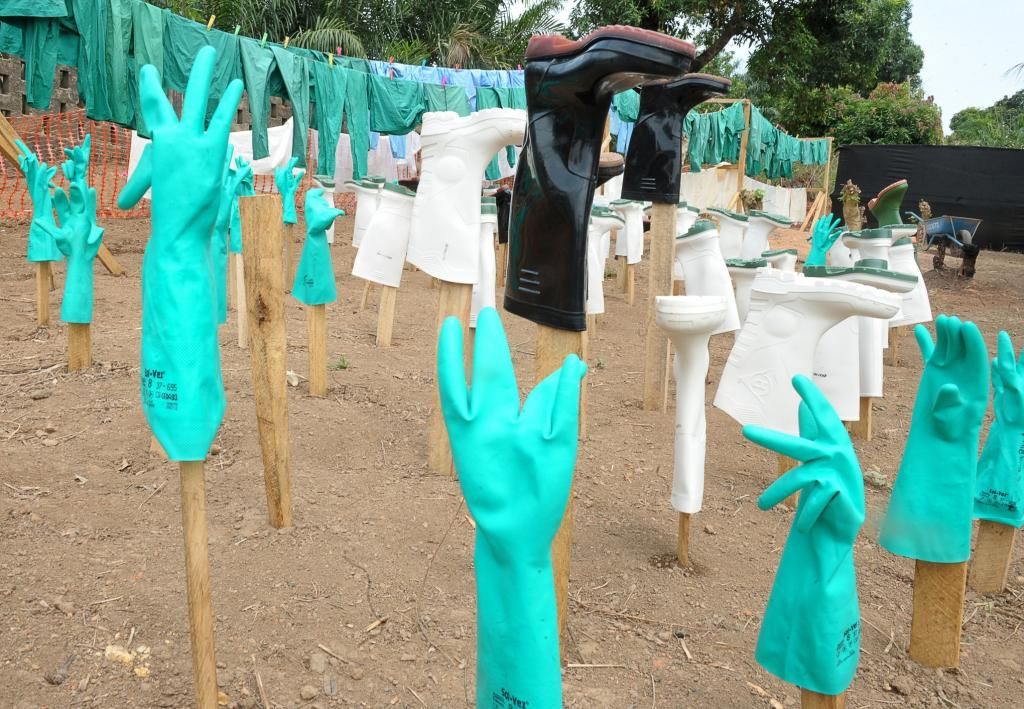Ebola.
But what is it, exactly? And where did it come from?
In 1976 the first outbreaks of a haemorrhagic fever occurred simultaneously in the Democratic republic of Congo and Sudan. The outbreak in the Congo occurred along the banks of the Ebola river and it was from there that the disease took its name.
Since then five distinct species of Ebolavirus species have been identified. All five can infect humans, but only three are associated with serious illness and death. Ebolavirus is one of three members of the filovirus family which also contains Marburgvirus and Cuevavirus. Marburg is also highly pathogenic and deadly to humans. Filoviridae take their name precisely because of their quite filamentous shape.
Zaire Ebolavirus (public domain image sourced from Wikipedia)
Patients with Ebola virus experience sudden onset of fever, headache, weakness, muscle pain and sore throat. This quickly progresses to vomiting, diarrhoea, impaired kidney and liver function and some cases internal and external bleeding (hence haemorrhagic fever). Ebola is highly contagious and pass between humans quite readily, with all forms of bodily fluids being infectious. Burial practices where mourners have contact with the deceased are a known issue for transmission. Health care workers have also historically featured highly in the death toll.
Compounding the issue is that Ebola is also able to be hosted by other secondary animals, other primates, pigs and porcupines.
Generally Ebola is thought to be introduced into the population by the handling of one of these animals found ill or dead in the forest. At this stage the host population of virus is thought to most likely to be fruit bats, although this has not been confirmed. This is complicated as often fruit bats nest close to farmed populations of pigs and this is increasingly occurring as human populations rise and more of the forest is removed to make way for homes.
The only fortunate thing with Ebola is that unlike other virus's like HIV it is a relative loud and quick infection. It has an incubation of between 2 and 21 days and it's effects are obvious. Once an epidemic is declared infected individuals can be found and isolated quickly and generally it can be brought under control rapidly with appropriate infection control methods.
Up until today there have been 24 outbreaks of Ebola. All have previously occurred in central Africa (with the exception of one case in West Africa in Cote d'Ivoire in 1994). Previously the highest case infection rate has been 425 (Uganda in 2000).
This makes this current epidemic so much more interesting (and frightening).
Currently there are cases in Liberia, Guinea, Sierra Leone and Nigeria. Suspected cases have been reported in Benin and Uganda. There have been 961 confirmed deaths, note confirmed, the actual number is probably higher. Cases of infection are probably in the thousands.
Why this is happening is complicated but probably mostly comes down to social factors.
Had this outbreak occurred in a Western society with decent hospitals, it would be over by now. With good infection control measures, Ebola is relatively easy to prevent. In the African countries affected there is limited health spending, hospitals are dilapidated with limited equipment, supplies, and personnel for contact tracing. Guinea, Liberia and Sierra Leone are amongst the poorest countries in the world.
Gloves and boots used by medical staff in Guinea - illustrates why the virus continues to spread and why so medical staff are dying ((Seyllou/AFP via Getty Images))
In addition there have been reports that patients are turning to witch doctors and other methods of treatments before presenting to hospital, an understandable impulse in the face of such a frightening disease - but unfortunately one that will cause the virus to spread further. Villages have also been restricting and refusing entry to medical aid workers - again for fear that doctors and nurses are bringing the disease rather than coming to bring assistance.
There is a commercial issue here as well - although an Ebola vaccination has been in the works for some time it has attracted very little investment, because it is unlikely to attract very little monetary return. It is a sad fact that more money is probably spent on erectile dysfunction research than on fighting off a deadly disease.
The good news is that this current epidemic has meant that this vaccine has been finally moved into clinical trials - although too late for the people suffering in this outbreak.
Hopefully they will have some relief soon.
Waiting for 42 days - 2 times 21 days virus free. That's the magic number.


I found my way here via Documenting Delight's post about blogs, and I am very glad I did! This is fascinating! I always wanted to be a doctor, but went into library and information science / software engineering instead. This is fantastic, and I look forward to backtracking through your archives! I hope you have a post about vaccination (if you do, I'll find it soon!)
ReplyDeleteOh thank you! Always wonderful to have new readers. And a big thank you to Georgia :). there is a post on the polio vaccine here http://medicalhistory.blogspot.com.au/2014/06/paralysed.html, and there's always vaccination content on the facebook page which is here https://www.facebook.com/medicalhistory1.. Good to have you around!
Delete